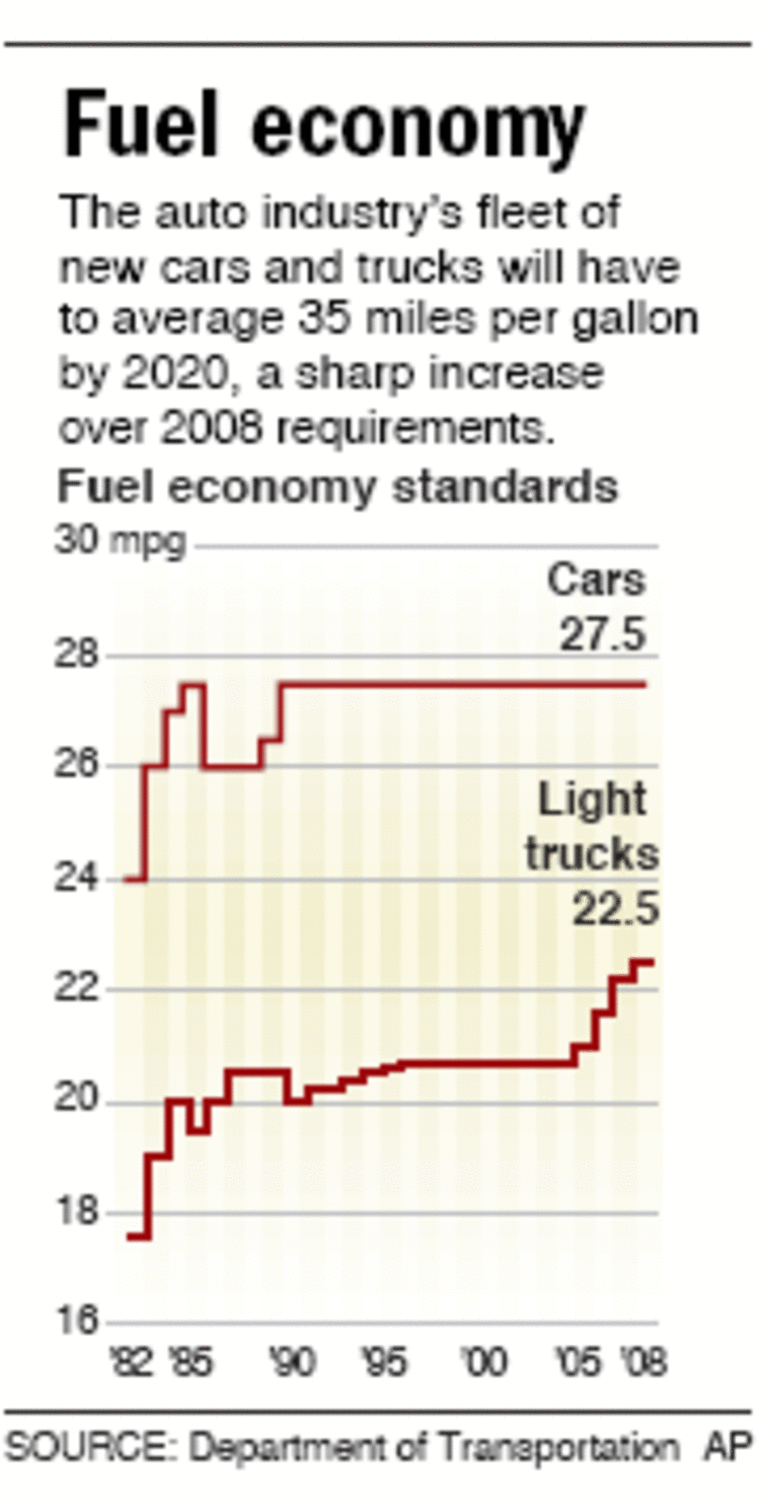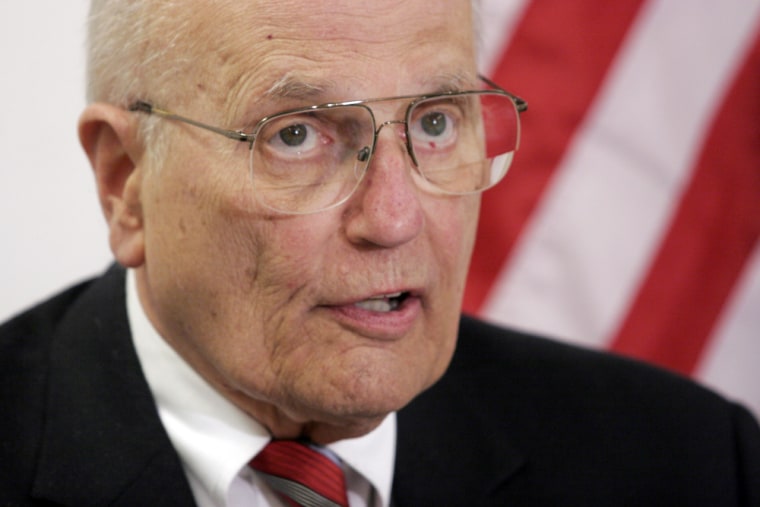An agreement among congressional Democrats to support a 40 percent increase in U.S. vehicle fuel efficiency by 2020 has been hailed as an historic step by both environmentalists and the automotive industry. But while the compromise seems to please both sides, it still faces substantial political hurdles.
For years, the environmental lobby has pushed for higher fuel economy standards to reduce greenhouse gas emissions and the nation’s dependence on foreign oil. But the powerful automotive industry has resisted change, saying the higher standards would increase costs and have a “devastating” economic impact on automakers.
As a result, average fuel economy for passenger cars has remained stuck at 27.5 miles per gallon since 1989, while pickup trucks and sport utility vehicles are held to a less rigorous standard of about 22 miles per gallon.
The longstanding standoff apparently was resolved Friday when House Speaker Nancy Pelosi and Rep. John Dingell, D-Mich., a longtime protector of the automotive industry and chairman of the House Energy and Commerce Committee, agreed on new, higher standards. Their proposal would require automakers to meet an industrywide average of 35 miles per gallon for cars, light trucks and SUVs, by 2020.

The fuel-economy plan is the centerpiece of a larger energy bill that is expected to come before the House for a vote this week. While Democrats have agreed on the fuel-economy measure, other aspects of the bill remain unresolved.
What’s more, the Senate, which has seen significant Republican opposition to higher standards, may not give the fuel-economy measure a warm reception, said Aaron Bragman, an industry analyst at consultancy Global Insight.
Although the bill’s backers hope the plan will reach President Bush's desk by the end of the year, the White House generally has been hostile to energy legislation proposed by Democrats. If Bush were to veto the bill, Democrats probably would be unable to override it, meaning fuel economy reform would likely have to wait until a new administration takes over in 2009, Bragman wrote in a research note.
Further complicating the issue is the state of California, which has brought suit against the federal Environmental Protection Agency for failing to rule on whether the state can set its own standards for emissions and fuel economy, he added, noting that 11 other states representing nearly one-third of the U.S. market, could follow suit with stricter standards than those mandated by the federal government.
“The compromise has by no means finalized the CAFE standards,” Bragman said, referring to the regulations for corporate average fuel economy. The compromise bill, if adopted, would represent Congress' first increase in CAFE standards since the program was adopted in 1975.
With the backing of lawmakers who long have opposed increased standards, including Dingell and Sen. Carl Levin, D-Mich., there is reason to be optimistic, said Phyllis Cuttino, director Pew Campaign for Fuel Efficiency, which advocates a significant increase in the fuel efficiency standards.
Dingell, who represents thousands of auto workers, has regularly opposed stringent fuel economy standards because of concerns about potential job losses and negative consequences for automakers, so his change of heart is a good sign, Cuttino said.
“You can assume that an agreement reached with the support of Mr. Dingell also has the backing of the automotive union and the big car companies, so that will add weight to it in the Senate and it will have broader support,” said Cuttino. “Dingell’s not only the powerful chairman of the House Energy Committee; he’s also represented Michigan for over 50 years, so you have to assume that any agreement that’s OK with Mr. Dingell is quite historic.”
Cuttino also says that supporting the bill would be a sound political move, as it would save consumers $25 billion at the pump, based on gas costing $2.50 a gallon, and it would reduce the nation’s oil consumption by 1.2 million barrels a day. Once fully phased in, the measure also would remove 206 million tons of greenhouse gases from the air annually.
“Our research shows there’s deep and wide support for fuel economy — American consumers want this,” Cuttino said. “There’s support across ideological lines, even in households that rely on the automotive industry for their livelihood, and we are finding over 70 percent, or sometimes 80 percent, of those we survey support this. It doesn’t matter where you live or if you are Democratic or Republican.”
A similar bill that passed the Senate this year also calls for average fuel economy of 35 miles per gallon by 2020. But that bill scrapped the distinction between passenger cars and light trucks, a key sticking point for Detroit’s big automakers.
Friday’s agreement maintains separate requirements for cars and trucks and offers credits that automakers can earn if they exceed fuel economy standards for some vehicles, offsetting other vehicles that fail to make the grade. These changes helped to make the bill more palatable to the industry, said Charles Territo, spokesman for the Alliance of Automobile Manufacturers, a trade group that represents the Big Three U.S. automakers as well as Japanese heavyweight Toyota.
“We’ve said all along that we support an increase in fuel economy standards,” Territo said. “This legislation still maintains the past targets of 35 miles per gallon by 2020, but it also provides mechanisms that help automakers balance the natural ups and downs of the product cycle, so we support the passage of this proposal.”
Ford CEO Alan Mulally said Monday that the automaker would be able to meet the new, tougher requirements without having to abandon any of its lower-mileage truck or SUV lines.
A confluence of factors has driven the push for a compromise on fuel economy, including California’s decision to aggressively raise its own standards and President Bush’s goal, announced in his State of the Union address, to cut gasoline consumption by 20 percent over 10 years, according to Mike Stanton, president of the Association of International Automobile Manufacturers, a trade group.
“It’s really been interesting — we’ve had a number of things come together this year,” said Stanton. “There’s the war in Iraq, oil near $100 (a barrel) and the Democrats in charge of the House and Senate, and the Senate had already passed its own legislation, so there was a feeling that they needed to get together and carve something out.”
